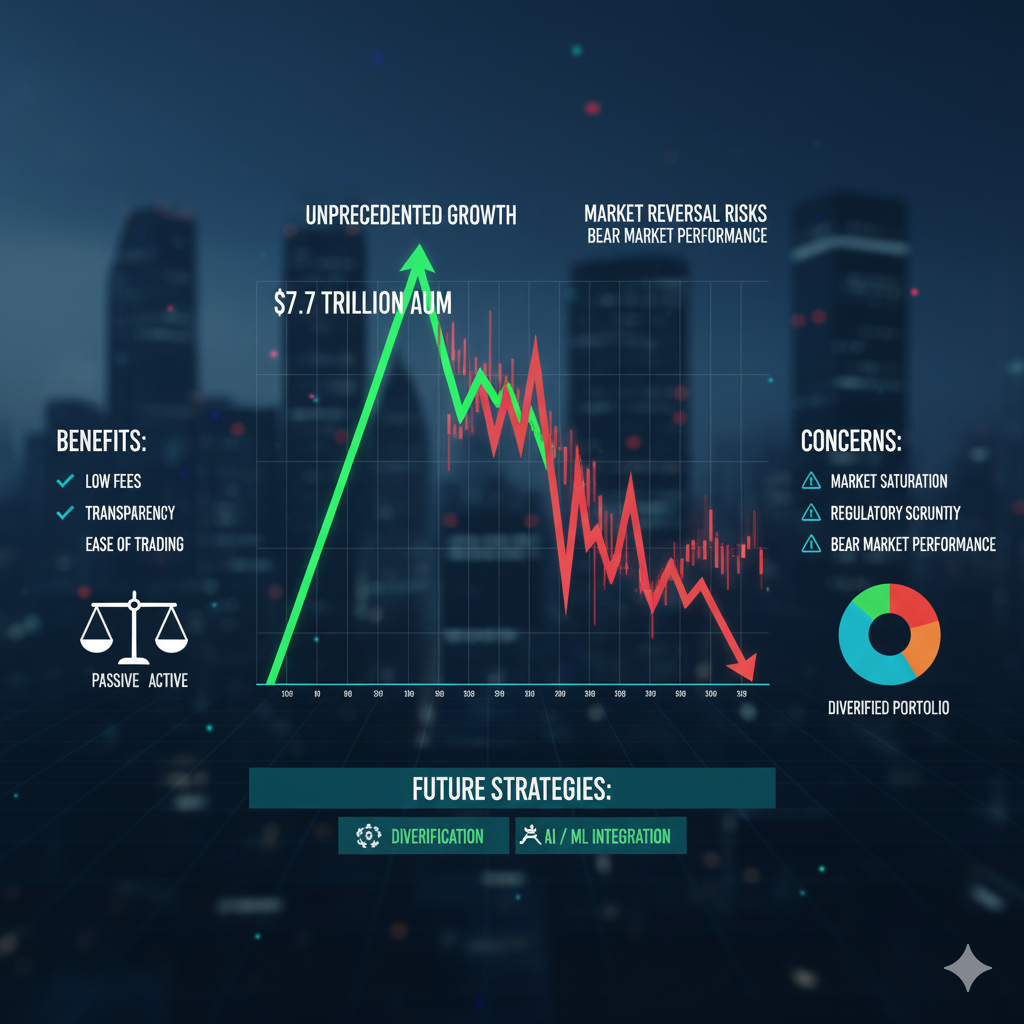
The exchange-traded fund (ETF) and index fund market has seen unprecedented growth over the past decade. According to data from Bloomberg, the total assets under management (AUM) in ETFs and index funds have surged from $1.7 trillion in 2010 to over $7.7 trillion in 2023. This growth can be attributed to several factors, including low fees, transparency, and the ease of trading. However, as the market continues to expand, questions arise about its sustainability and potential for a reversal.
Market Saturation and Regulatory Concerns
One of the primary concerns is market saturation. The ETF and index fund industry has become highly competitive, with numerous providers offering similar products. This competition has driven down fees, making it difficult for new entrants to gain a foothold. Additionally, regulatory bodies like the SEC are increasingly scrutinizing the industry to ensure investor protection and market stability. For instance, the SEC has recently proposed new rules to enhance the transparency and risk management of ETFs and index funds.
Performance and Market Cycles
Historically, ETFs and index funds have performed well during bull markets, but their performance during bear markets is a different story. During the 2008 financial crisis, many index funds and ETFs experienced significant losses, leading to a reevaluation of their role in diversified portfolios. As we approach a potential market downturn, investors should be cautious about the performance of these funds. According to Reuters, some experts predict that the next bear market could expose weaknesses in the ETF and index fund structure, particularly in terms of liquidity and tracking error.
Active vs. Passive Management
The debate between active and passive management has been ongoing for years. Passive funds, such as ETFs and index funds, have gained popularity due to their lower fees and ease of use. However, active managers argue that their expertise can outperform the market, especially during volatile periods. A recent study by Morningstar found that while passive funds have outperformed active funds over the long term, the gap has narrowed in recent years. This suggests that active management may be regaining some of its appeal, particularly in niche markets and during market corrections.
Technological Advancements and New Opportunities
Technological advancements are reshaping the investment landscape, and ETFs and index funds are no exception. The rise of artificial intelligence (AI) and machine learning (ML) is enabling the creation of more sophisticated and targeted ETFs. For example, AI-driven ETFs can dynamically adjust their holdings based on market conditions, potentially offering better risk management and performance. CNBC reports that several major financial institutions are already exploring the integration of AI in their ETF strategies.
Investor Sentiment and Market Trends
Investor sentiment plays a crucial role in the performance of ETFs and index funds. Currently, many investors are bullish on these products, driven by their historical performance and the allure of low fees. However, sentiment can shift rapidly, and a bearish outlook could lead to a significant outflow of funds. Nasdaq highlights that investor sentiment is closely tied to economic indicators, geopolitical events, and market trends. Understanding these factors can help investors make more informed decisions about their ETF and index fund investments.
Strategies for Navigating Potential Reversals
To navigate potential reversals in the ETF and index fund market, investors should consider diversifying their portfolios. This includes allocating a portion of their investments to active funds, alternative assets, and individual stocks. Diversification can help mitigate the risks associated with market downturns and provide opportunities for outperformance. Additionally, staying informed about market trends and regulatory changes is essential. Investopedia offers valuable resources for investors looking to deepen their understanding of ETFs and index funds.
Expert Predictions and Market Outlook
Despite the concerns, many experts believe that ETFs and index funds will continue to play a significant role in the investment landscape. A report by MarketWatch suggests that the growth of these funds may slow but is unlikely to reverse completely. The key will be adapting to new market conditions and leveraging technological advancements to enhance performance and risk management.
Conclusion
The ETF and index fund boom has been a driving force in the investment world, but it is not without its risks. By staying informed, diversifying your portfolio, and adapting to new market conditions, you can protect your investments and capitalize on emerging opportunities. The future of ETFs and index funds is bright, but it requires a nuanced and strategic approach.
